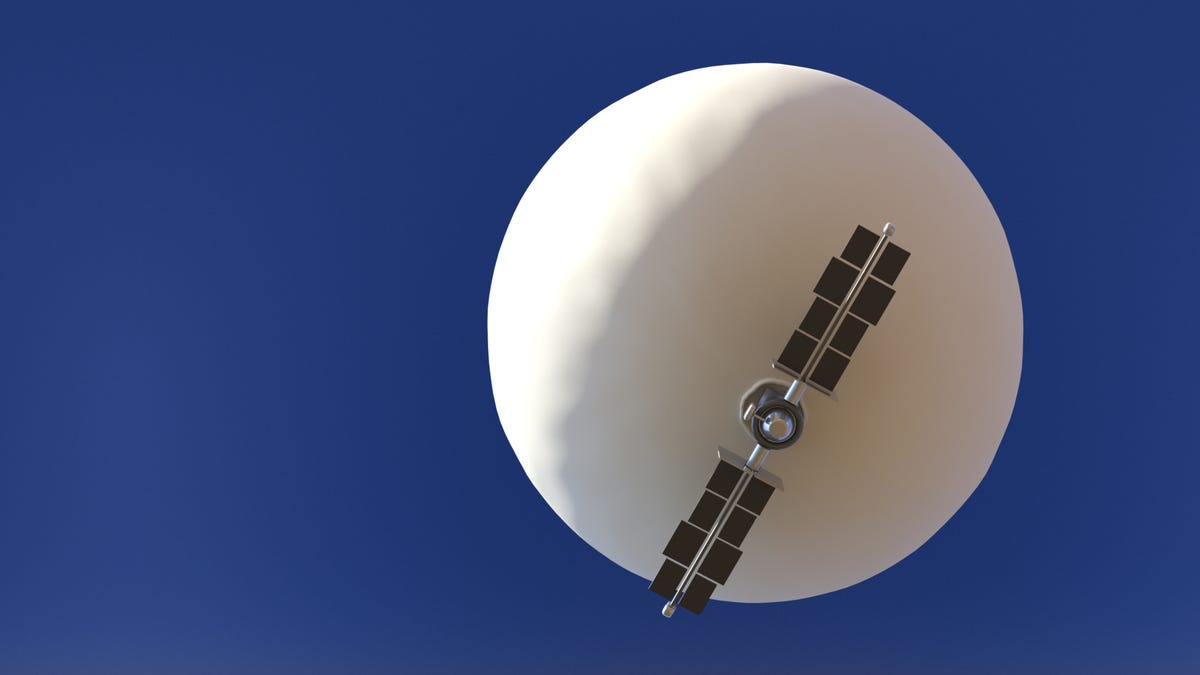7 Objects Floating in US Airspace Right Now
The US Government has shot down several strange objects floating in US airspace in recent weeks. While the initial buzz linked the objects to stereotypical UFOs and extraterrestrials, we now know at least some were high-altitude balloons. That discovery...

Image: Broadcast Media (Shutterstock)
The US Government has shot down several strange objects floating in US airspace in recent weeks. While the initial buzz linked the objects to stereotypical UFOs and extraterrestrials, we now know at least some were high-altitude balloons. That discovery raises the question: How much stuff is in the air right now?
You might not realize it looking at the sky on a clear day, but there’s actually a whole bunch of junk floating around up there besides birds, planes, and Superman. A lot of it is also shot down, whether for national security reasons, or to clear the skies of clutter. While some of that stuff could be UFOs from extraterrestrial origins, a lot of it is simply man-made, but still pretty interesting. So, here’s a look at seven such objects floating in US airspace right now.
DJI Phantom 4 Pro droneImage: DJI
Civilian drones, such as the DJI Phantom 4 (pictured above), are tiny multi-propeller machines commonly used for aerial photography or just for fun—like remote-controlled helicopters for grown-ups. Similar drones are also used both by businesses like Amazon’s delivery drones, and by law enforcement agencies for surveillance.
While some high-end drones are proficient fliers, the FAA restricts their legal maximum altitude to just 400 hundred feet to prevent interference with commercial flight paths. Regulations are stricter than they were several years ago due to privacy concerns, so you might see these less often in neighborhoods or certain protected areas, but plenty of them buzz around a few hundred feet above us. Sometimes, they’re even used for target practice.
We commonly think of landfills and the ocean as the final resting place for trash, but there’s a bunch of “sky trash” cluttering the clouds as well. While the more dangerous sky trash floats at extreme altitudes (more on that in a moment), there’s a ton of smaller junk at lower altitudes, too. This includes small helium-filled party balloons that snuck out of the party and ascended to the heavens, plastic bags caught in the wind, and other terrestrial detritus stuck in air currents.
This stuff eventually falls to Earth, but it can be a problem while it’s airborne. The air force is unlikely to scramble jets over an intrepid plastic bag, but sky trash could interfere with drones and low-flying aircraft, harm wildlife, and even be mistaken for a UFO (if you really squint your eyes).
Image: aappp (Shutterstock)
Hundreds of high-altitude drones cruise a few thousand feet above the Earth right now. Unlike civilian drones, high-altitude drones—or Unmanned Aerial Systems (UAS)—are built for much higher altitudes and much longer flights, and, in some cases, are not restricted to the FAA’s regulations. UASs usually fly between 1,200 and 60,000 feet, depending on the model and its use (for context, commercial airliners fly at 36,000 feet and jet fighters fly around 65,000 feet), and fly high and fast enough that they can’t be seen or heard despite being much larger than civilian drones. Drones in this category are used for atmospheric surveillance, covert reconnaissance, and combat.
While you won’t see these stealthy machines with your naked eye—and some even elude the grasp of radar devices—it’s likely the military would shoot down an unaccounted-for drone flying over US airspace.
Photo: Alessandro Sarasso (Shutterstock)
When it comes to unidentified objects encountered by the US military, the most likely culprits are high-altitude balloons. The US government, weather tracking organizations, private companies, and other groups use these balloons for a variety of reasons. Some collect meteorological data, perform atmospheric experiments, and even deliver internet access to remote locations or areas following natural disasters. They’re also used as reconnaissance devices, as we’ve recently seen in the news.
There are thousands of balloons floating up there right now, many of which are wider in diameter than a jetliner—but you’ll never see them. These balloons fly much higher than drones or airplanes, often as high as 70,000 to 121,000 feet, making them impossible to spot by simply staring up at the sky. Unless, of course, they fall below those altitudes and show up in flight paths, or are noticed by surveillance instruments. This is unusual, but all the recent headlines about “UFOs” turning out to be these balloons indicate it’s happening more often.
One theory behind the sudden appearance (and shooting down) of more spy balloons in US airspace lately is that the government is now looking for—and destroying—them and other unknown high-altitude flying objects more actively than in the past. Normally, if a balloon goes rogue or malfunctions and ends up where it’s not supposed to be, the government probably ignored it. But following the appearance of the Chinese spy balloon, the military is on high alert and shooting them down even if they’re not a threat.
Far above the Earth, in the upper reaches of the atmosphere, is yet another category of sky trash: Space junk.
Space junk comes in many sizes, but much of it is mission debris from the world’s many airforces and space research organizations, such as NASA, and private companies like SpaceX. These groups send up rockets, satellites, and other spacecraft that leave behind scraps and other detritus. If the objects reach the outer limits of the atmosphere, they may not immediately fall back to Earth, but instead linger in orbit for a time, where they collide and break apart into smaller bits, until it eventually burns up in the atmosphere or returns to Earth. A recent NASA study estimates over one billion pieces of small space debris orbit around Earth.
Smaller space junk won’t show up as a “UFO,” but it does pose a risk to successful high-altitude and space flight missions. Even a tiny scrap of space junk can compromise a shuttle’s thermal shielding or obliterate a satellite. As such, NASA and other organizations are studying ways to remove the debris, including shooting it with lasers, pushing it to burn up in the atmosphere, or capturing it with giant nets and remote-controlled vehicles.
Image: Frame Stock Footage (Shutterstock)
While technically considered space junk as well, these abandoned satellites and other discarded spacecraft are much larger objects and often mostly intact.
Some larger space junk like this lies beyond what is typically considered “US Airspace,” but it’s still a major concern for groups like NASA and the US Airforce. Dead satellites and expended rockets are easier to track—and therefore unlikely to be mistaken as “UFOs”—but they still pose a risk to operational satellites and spacecraft. Worse, the longer they remain in orbit, the more likely they are to collide with other spacecraft and smaller debris and create even more space junk.
Large space junk that reenters the atmosphere but doesn’t completely burn up can also be hazardous to humans and the environment where they land. As such, anti-satellite weapons (ASATS) are occasionally used to destroy decommissioned satellites, such as Russia using an ASAT missile to destroy the Soviet-era KOSMOS 1408 communications satellite in 2021.
Image: Stephane Masclaux (Shutterstock)
Lastly, along with the ships, satellites, and other human-made space junk in Earth’s orbit, there’s also a bunch of space rocks.
Most space rocks come in the form of small meteoroids, micrometeoroids, and interplanetary dust. These tiny space rocks are fun to watch streak across the sky as they burn up in the atmosphere and don’t need to be shot down—though they can damage satellites and other space vehicles, and collisions with extraneous craft create more space junk. The rare meteorites that make it to Earth are usually one centimeter to one meter in diameter and seldom harm anyone or the environment.
That said, there are larger bodies that could pose a threat if they collide with Earth. Any impact from an object around one kilometer or larger would devastate the planet, and anything larger could lead to a mass extinction event.
While there’s no sure-fire method to shoot down an incoming asteroid of that size, several prospective solutions have been proposed by NASA and other groups, including detonating nuclear explosives to pulverize or break up the object or deflecting the asteroid off-course with a kinetic impact from a rocket or other spacecraft. Let’s hope we never have to see those theoretical solutions put to the test.

 BigThink
BigThink 

































